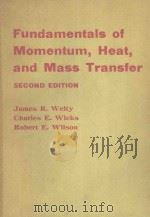《FUNDAMENTALS OF HEAT AND MASS TRANSFER SIXTH EDITION》
| 作者 | FRANK P.INCROPERA,DAVID P.DEWI 编者 |
|---|---|
| 出版 | 未查询到或未知 |
| 参考页数 | 925 |
| 出版时间 | 没有确切时间的资料 目录预览 |
| ISBN号 | 0471794716 — 求助条款 |
| PDF编号 | 812058138(仅供预览,未存储实际文件) |
| 求助格式 | 扫描PDF(若分多册发行,每次仅能受理1册) |
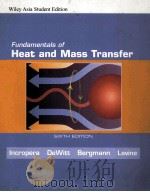
CHAPTER 1Essential Concepts1
1.1What and How?2
1.2Physical Origins and Rate Equations3
1.2.1 Conduction3
1.2.2 Convection6
1.2.3 Radiation9
1.2.4 Relationship to Thermodynamics12
1.3The Conservation of Energy Requirement13
1.3.1 Conservation of Energy for a Control Volume13
1.3.2 The Surface Energy Balance25
1.3.3 Application of the Conservation Laws:Methodology28
1.4 Analysis of Heat Transfer Problems: Methodology29
1.5 Relevance of Heat Transfer32
1.6 Units and Dimensions35
1.7Summary38
References41
Problems41
CHAPTER 2Fundamental Concepts of Conduction57
2.1The Conduction Rate Equation58
2.2The Thermal Properties of Matter60
2.2.1 Thermal Conductivity60
2.2.2 Other Relevant Properties67
2.3 The Heat Diffusion Equation70
2.4 Boundary and Initial Conditions77
2.5Summary81
References82
Problems82
CHAPTER 3Steady-State, One-Dimensional Conduction95
3.1The Plane Wall96
3.1.1 Temperature Distribution96
3.1.2 Thermal Resistance98
3.1.3 The Composite Wall99
3.1.4 Contact Resistance101
3.2 An Alternative Conduction Analysis112
3.3Radial Systems116
3.3.1 The Cylinder116
3.3.2 The Sphere122
3.4 Summary of One-Dimensional Conduction Results125
3.5Conduction with Thermal Energy Generation126
3.5.1 The Plane Wall127
3.5.2 Radial Systems132
3.5.3 Application of Resistance Concepts137
3.6Heat Transfer from Extended Surfaces137
3.6.1 A General Conduction Analysis139
3.6.2 Fins of Uniform Cross-Sectional Area141
3.6.3 Fin Performance147
3.6.4 Fins of Nonuniform Cross-Sectional Area150
3.6.5 Overall Surface Efficiency153
3.7 The Bioheat Equation162
3.8Summary166
References168
Problems169
CHAPTER 4Steady-State, Multi-Dimensional Conduction201
4.1Alternative Approaches202
4.2 The Method of Separation of Variables203
4.3 The Conduction Shape Factor and the Dimensionless Conduction Heat Rate207
4.4Finite-Difference Equations212
4.4.1 The Nodal Network213
4.4.2 Finite-Difference Form of the Heat Equation214
4.4.3 The Energy Balance Method215
4.5Solving the Finite-Difference Equations222
4.5.1 The Matrix Inversion Method222
4.5.2 Gauss-SeidelIteration223
4.5.3 Some Precautions229
4.6Summary234
References235
Problems235
CHAPTER 5Time-Dependent Conduction255
5.1The Lumped Capacitance Method256
5.2 Validity of the Lumped Capacitance Method259
5.3 General Lumped Capacitance Analysis263
5.4 Spatial Effects270
5.5The Plane Wall with Convection272
5.5.1 Exact Solution272
5.5.2 Approximate Solution273
5.5.3 Total Energy Transfer274
5.5.4 Additional Considerations275
5.6Radial Systems with Convection276
5.6.1 Exact Solutions276
5.6.2 Approximate Solutions277
5.6.3 Total Energy Transfer277
5.6.4 Additional Considerations278
5.7 The Semi-Infinite Solid283
5.8Objects with Constant Surface Temperatures or Surface Heat Fluxes290
5.8.1 Constant Temperature Boundary Conditions290
5.8.2 Constant Heat Flux Boundary Conditions292
5.8.3 Approximate Solutions293
5.9 Periodic Heating299
5.10 Finite-Difference Methods302
5.10.1Discretization of the Heat Equation: The Explicit Method302
5.10.2 Discretization of the Heat Equation: The Implicit Method310
5.11 Summary317
References319
Problems319
CHAPTER 6Fundamental Concepts of Convection347
6.1The Convection Boundary Layers348
6.1.1 The Velocity Boundary Layer348
6.1.2 The Thermal Boundary Layer349
6.1.3 The Concentration Boundary Layer350
6.1.4 Significance of the Boundary Layers352
6.2Local and Average Convection Coefficients352
6.2.1 Heat Transfer352
6.2.2 Mass Transfer353
6.2.3 The Problem of Convection355
6.3Laminar and Turbulent Flow359
6.3.1 Laminar and Turbulent Velocity Boundary Layers359
6.3.2 Laminar and Turbulent Thermal and Species Concentration Boundary Layers361
6.4The Boundary Layer Equations364
6.4.1 Boundary Layer Equations for Laminar Flow365
6.5Boundary Layer Similarity: The Normalized Boundary Layer Equations367
6.5.1 Boundary Layer Similarity Parameters368
6.5.2 Functional Form of the Solutions368
6.6 Physical Significance of the Dimensionless Parameters374
6.7Boundary Layer Analogies377
6.7.1 The Heat and Mass Transfer Analogy377
6.7.2 Evaporative Cooling381
6.7.3 The Reynolds Analogy384
6.8 The Convection Coefficients385
6.9Summary385
References386
Problems387
CHAPTER 7External Forced Convection401
7.1The Empirical Method403
7.2The Flat Plate in Parallel Flow405
7.2.1 Laminar Flow over an Isothermal Plate: A Similarity Solution405
7.2.2 Turbulent Flow over an Isothermal Plate410
7.2.3 Mixed Boundary Layer Conditions411
7.2.4 Unheated Starting Length412
7.2.5 Flat Plates with Constant Heat Flux Conditions413
7.2.6 Limitations on Use of Convection Coefficients414
7.3 Methodology for a Convection Calculation414
7.4The Cylinder in Cross Flow423
7.4.1 Flow Considerations423
7.4.2 Convection Heat and Mass Transfer425
7.5 The Sphere433
7.6 Flow Across Banks of Tubes436
7.7Impinging Jets447
7.7.1 Hydrodynamic and Geometric Considerations447
7.7.2 Convection Heat and Mass Transfer449
7.8 Packed Beds452
7.9Summary454
References456
Problems457
CHAPTER 8Internal Forced Convection485
8.1Hydrodynamic Considerations486
8.1.1 Flow Conditions486
8.1.2 The Mean Velocity487
8.1.3 Velocity Profile in the Fully Developed Region488
8.1.4 Pressure Gradient and Friction Factor in Fully Developed Flow490
8.2Thermal Considerations491
8.2.1 The Mean Temperature492
8.2.2 Newton’s Law of Cooling493
8.2.3 Fully Developed Conditions493
8.3The Energy Balance497
8.3.1 General Considerations497
8.3.2 Constant Surface Heat Flux498
8.3.3 Constant Surface Temperature501
8.4Laminar Flow in Circular Tubes: Thermal Analysis and Convection Correlations505
8.4.1 The Fully Developed Region505
8.4.2 The Entry Region512
8.5 Convection Correlations: Turbulent Flow in Circular Tubes514
8.6 Convection Correlations: Noncircular Tubes and the Concentric Tube Annulus518
8.7 Heat Transfer Enhancement521
8.8 Microscale Internal Flow524
8.8.1 Flow Conditions in Microscale Internal Flow524
8.8.2 Thermal Considerations in Microscale Internal Flow525
8.9 Convection Mass Transfer528
8.10 Summary531
References533
Problems534
CHAPTER 9Natural Convection559
9.1 Physical Considerations560
9.2 The Governing Equations563
9.3 Similarity Considerations564
9.4 Laminar Free Convection on a Vertical Surface566
9.5 The Effects of Turbulence568
9.6 Empirical Correlations: External Free Convection Flows571
9.6.1 The Vertical Plate571
9.6.2 Inclined and Horizontal Plates574
9.6.3 The Long Horizontal Cylinder579
9.6.4 Spheres583
9.7 Free Convection within Parallel Plate Channels584
9.7.1 Vertical Channels585
9.7.2 Inclined Channels587
9.8 Empirical Correlations: Enclosures587
9.8.1 Rectangular Cavities587
9.8.2 Concentric Cylinders590
9.8.3 Concentric Spheres591
9.9 Combined Free and Forced Convection593
9.10 Convection Mass Transfer594
9.11 Summary595
References596
Problems597
CHAPTER 10Convection Processes of Boiling and Condensation619
10.1 Dimensionless Parameters in Boiling and Condensation620
10.2 Boiling Modes621
10.3 Pool Boiling622
10.3.1 The Boiling Curve622
10.3.2 Modes of Pool Boiling624
10.4 Pool Boiling Correlations627
10.4.1 Nucleate Pool Boiling627
10.4.2 Critical Heat Flux for Nucleate Pool Boiling629
10.4.3 Minimum Heat Flux629
10.4.4 Film Pool Boiling630
10.4.5 Parametric Effects on Pool Boiling631
10.5Forced Convection Boiling636
10.5.1 External Forced Convection Boiling637
10.5.2 Two-Phase Flow637
10.5.3 Two-Phase Flow in Microchannels640
10.6 Condensation: Physical Mechanisms641
10.7 Laminar Film Condensation on a Vertical Plate643
10.8 Turbulent Film Condensation646
10.9 Film Condensation on Radial Systems651
10.10 Film Condensation in Horizontal Tubes654
10.11 Dropwise Condensation655
10.12 Summary655
References656
Problems657
CHAPTER 11Heat Exchange Devices669
11.1Heat Exchanger Types670
11.2 The Overall Heat Transfer Coefficient673
11.3Heat Exchanger Analysis: Use of the Log Mean Temperature Difference675
11.3.1 The Parallel-Flow Heat Exchanger676
11.3.2 The Counterflow Heat Exchanger679
11.3.3 Special Operating Conditions679
11.4Heat Exchanger Analysis: The Effectiveness-NTU Method686
11.4.1 Definitions686
11.4.2 Effectiveness-NTU Relations688
11.5 Heat Exchanger Design and Performance Calculations: Using the Effectiveness-NTU Method694
11.6 Compact Heat Exchangers700
11.7Summary705
References706
Problems707
CHAPTER 12Fundamental Concepts of Radiation723
12.1Fundamental Concepts724
12.2Radiation Intensity727
12.2.1 Mathematical Definitions727
12.2.2 Radiation Intensity and Its Relation to Emission728
12.2.3 Relation to Irradiation733
12.2.4 Relation to Radiosity735
12.3Blackbody Radiation736
12.3.1 The Planck Distribution737
12.3.2 Wien’s Displacement Law737
12.3.3 The Stefan-Boltzmann Law738
12.3.4 Band Emission739
12.4 Emission from Real Surfaces744
12.5Absorption, Reflection, and Transmission by Real Surfaces752
12.5.1 Absorptivity754
12.5.2 Reflectivity755
12.5.3 Transmissivity756
12.5.4 Special Considerations757
12.6 Kirchhoff’s Law762
12.7 The Gray Surface764
12.8 Environmental Radiation770
12.9Summary776
References780
Problems780
CHAPTER 13Radiative Transfer Between Two or More Surfaces811
13.1The View Factor812
13.1.1 The View Factor Integral812
13.1.2 View Factor Relations813
13.2Radiation Exchange Between Opaque, Diffuse, Gray Surfaces in an Enclosure822
13.2.1 Net Radiation Exchange at a Surface823
13.2.2 Radiation Exchange Between Surfaces824
13.2.3 Blackbody Radiation Exchange830
13.2.4 The Two-Surface Enclosure831
13.2.5 Radiation Shields832
13.2.6 The Reradiating Surface835
13.3 Multimode Heat Transfer839
13.4Radiation Exchange with Participating Media842
13.4.1 Volumetric Absorption843
13.4.2 Gaseous Emission and Absorption843
13.5Summary847
References849
Problems849
CHAPTER 14Mass Transfer by Diffusion879
14.1Physical Origins and Rate Equations880
14.1.1 Physical Origins880
14.1.2 Mixture Composition881
14.1.3 Fick’s Law of Diffusion882
14.1.4 Mass Diffusivity883
14.2Mass Transfer in Nonstationary Media885
14.2.1 Absolute and Diffusive Species Fluxes885
14.2.2 Evaporation in a Column888
14.3 The Stationary Medium Approximation893
14.4Conservation of Species for a Stationary Medium894
14.4.1 Conservation of Species for a Control Volume894
14.4.2 The Mass Diffusion Equation894
14.4.3 Stationary Media with Specified Surface Concentrations897
14.5Boundary Conditions and Discontinuous Concentrations at Interfaces900
14.5.1 Evaporation and Sublimation901
14.5.2 Solubility of Gases in Liquids and Solids902
14.5.3 Catalytic Surface Reactions905
14.6 Mass Diffusion with Homogeneous Chemical Reactions908
14.7 Transient Diffusion911
14.8Summary916
References917
Problems917
《FUNDAMENTALS OF HEAT AND MASS TRANSFER SIXTH EDITION》由于是年代较久的资料都绝版了,几乎不可能购买到实物。如果大家为了学习确实需要,可向博主求助其电子版PDF文件。对合法合规的求助,我会当即受理并将下载地址发送给你。
高度相关资料
-
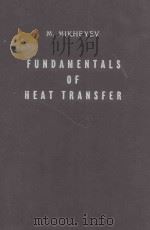
- FUNDAMENTALS OF HEAT TRANSFER
- PEACE PUBLISHERS
-
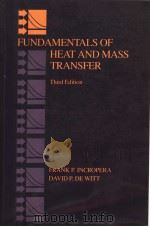
- FUNDAMENTALS OF HEAT AND MASS TRANSFER
- JOHN WILEY & SONS
-
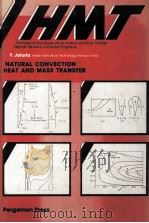
- Natural Convection Heat and Mass Transfer
- 1980 Pergamon Press.
-
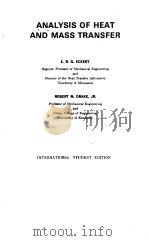
- ANALYSIS OF HEAT AND MASS TRANSFER
- 1972 McGRAW-HILL KOGAKUSHA LTD
-
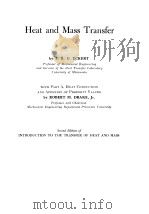
- Heat and Mass Transfer
- 1959 McGRAW-HILL BOOK COPMANY INC
-
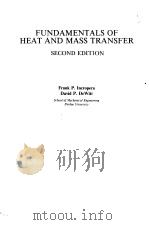
- FUNDAMENTALS OF HEAT AND MASS TRANSFER
- 1981 JOHN WILEY & SONS
-
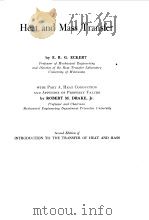
- Heat and Mass Transfer
- 1959 McGRAW-HILL BOOK COPMANY INC
-
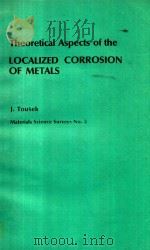
- THEORETICAL ASPECTS OF THE LOCALIZED CORROSION OF METALS
- 1985 TRANS TECH PUBLICATIONS
-
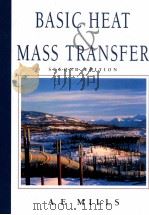
- Basic heat and mass transfer second edition
- 1999 PrenticeHall
-

- Convective Heat and Mass Transfer
- 1966 McGraw-Hill Book Company.
-

- HEAT AND MASS TRANSFER
- 1980 MIR PUBLISHERS
-

- HEAT AND MASS TRANSFER
- 1978 TAT MCGRAW-HILL PUBLISHING CO.LTD.
提示:百度云已更名为百度网盘(百度盘),天翼云盘、微盘下载地址……暂未提供。➥ PDF文字可复制化或转WORD


